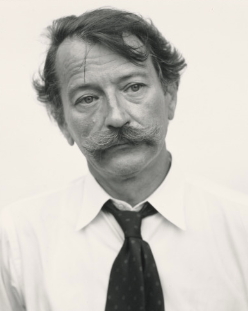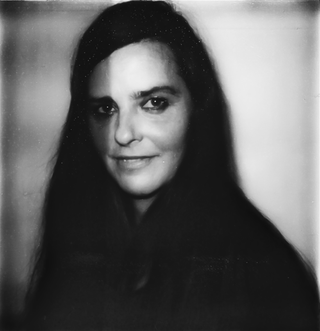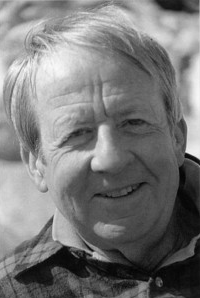Related Research Articles

Ansel Easton Adams was an American landscape photographer and environmentalist known for his black-and-white images of the American West. He helped found Group f/64, an association of photographers advocating "pure" photography which favored sharp focus and the use of the full tonal range of a photograph. He and Fred Archer developed a system of image-making called the Zone System, a method of achieving a desired final print through a technical understanding of how the tonal range of an image is the result of choices made in exposure, negative development, and printing.

Sally Mann is an American photographer known for making large format black and white photographs of people and places in her immediate surroundings: her children, husband, and rural landscapes, as well as self-portraits.

Joel Meyerowitz is an American street, portrait and landscape photographer. He began photographing in color in 1962 and was an early advocate of the use of color during a time when there was significant resistance to the idea of color photography as serious art. In the early 1970s he taught photography at the Cooper Union in New York City.
Lee Friedlander is an American photographer and artist. In the 1960s and 1970s, Friedlander evolved an influential and often imitated visual language of urban "social landscape," with many of his photographs including fragments of store-front reflections, structures framed by fences, posters and street signs. His work is characterized by its innovative use of framing and reflection, often using the natural environment or architectural elements to frame his subjects. Over the course of his career, Friedlander has been the recipient of numerous awards and his work has been exhibited in major museums and galleries worldwide.

Thaddeus John Szarkowski was an American photographer, curator, historian, and critic. From 1962 to 1991 Szarkowski was the director of photography at New York's Museum of Modern Art (MoMA).
Frank Gohlke is an American landscape photographer. He has been awarded two Guggenheim fellowships, two fellowships from the National Endowment for the Arts, and a Fulbright Scholar Grant. His work is included in numerous permanent collections, including those of Museum of Modern Art, New York; the Metropolitan Museum of Art; and the Art Institute of Chicago.
Nicholas Nixon is an American photographer, known for his work in portraiture and documentary photography, and for using the 8×10 inch view camera.

The Royal Photographic Society of Great Britain, commonly known as the Royal Photographic Society (RPS), is one of the world's oldest photographic societies. It was founded in London, England, in 1853 as the Photographic Society of London with the objective of promoting the art and science of photography, and in 1853 received royal patronage from Queen Victoria and Prince Albert.
Richard Misrach is an American photographer. He has photographed the deserts of the American West, and pursued projects that document the changes in the natural environment that have been wrought by various man-made factors such as urban sprawl, tourism, industrialization, floods, fires, petrochemical manufacturing, and the testing of explosives and nuclear weapons by the military. Curator Anne Wilkes Tucker writes that Misrach's practice has been "driven [by] issues of aesthetics, politics, ecology, and sociology." In a 2011 interview, Misrach noted: "My career, in a way, has been about navigating these two extremes - the political and the aesthetic."

Rineke Dijkstra HonFRPS is a Dutch photographer. She lives and works in Amsterdam. Dijkstra has been awarded an Honorary Fellowship of the Royal Photographic Society, the 1999 Citibank Private Bank Photography Prize and the 2017 Hasselblad Award.
Linda Connor is an American photographer living in San Francisco, California. She is known for her landscape photography.
Mark Klett is an American photographer. His work is included in the collections of the Smithsonian American Art Museum, the Museum of Fine Arts Houston and the Museum of Modern Art, New York.
Jim Goldberg is an American artist and photographer, whose work reflects long-term, in-depth collaborations with neglected, ignored, or otherwise outside-the-mainstream populations.

Anne Wilkes Tucker is an American retired museum curator of photographic works. She retired in June 2015.

Ray K. Metzker was an American photographer known chiefly for his stark, experimental Black and White cityscapes and for his large assemblages of printed film strips and single frames, known as Composites.
Walter Landon Chappell was an American photographer and poet, primarily known for his black and white photography of landscapes, nature, and the human body.
John Paul Caponigro is an environmental fine art landscape photographer.
William Clift is an American photographer known for his black-and-white imagery of landscapes and of architectural subjects. Most of his work has been made in New Mexico, including Santa Fe where he has lived and worked since 1971, and of Mont Saint Michel in France, and St. Louis, MO.
Philip Perkis is an American photographer and educator. He has received a Guggenheim Fellowship and his work is held in the collections of the Art Institute of Chicago, Carnegie Museum of Art, J. Paul Getty Museum, Metropolitan Museum of Art, Museum of Contemporary Art, Los Angeles, and Museum of Fine Arts, Boston.
Ryan Weideman is an American photographer, living in New York City, who photographed his passengers while working as a taxi driver there between 1981 and 2016. He produced a book of his photographs, In My Taxi: New York After Hours (1991). He also makes lithographic print-based art.
References
- 1 2 "Error - RPS". www.rps.org.
- 1 2 "Results for "Paul Caponigro" - The Metropolitan Museum of Art". www.metmuseum.org. Retrieved 2024-11-26.
- 1 2 "Works | Paul Caponigro | People | The MFAH Collections". mfah.org. Retrieved 2024-11-26.
- 1 2 https://www.moma.org/artists/961
- 1 2 "Caponigro, Paul". SFMOMA. Retrieved 2024-11-26.
- 1 2 3 4 5 6 7 8 9 10 "Paul Caponigro, Photographer in Love with Nature, Dies at 91". The New York Times. November 25, 2024. Retrieved November 25, 2024.
- ↑ "Paul Caponigro Artwork for Sale at Online Auction | Paul Caponigro Biography & Info". invaluable.com.
- ↑ "In memoriam : Paul Caponigro (1932–2024)". L'œil De La Photographie. 14 November 2024. Retrieved 15 November 2024.
- ↑ "Paul Caponigro". New Mexico Museum of Art. Retrieved 14 August 2018.
- ↑ "Photographer Paul Caponigro Biography". www.photographywest.com.
- 1 2 "Paul Caponigro – John Simon Guggenheim Memorial Foundation…" . Retrieved 2024-11-26.
- ↑ "Collection | Carnegie Museum of Art". carnegieart.org. Retrieved 2024-11-26.